Annual Phlox, also known as Drummond Phlox, Texas Belle, or Pride of Texas, is a charming annual plant from the Polemoniaceae family. Native to Texas, this species (Phlox drummondii) is celebrated for its vivid scarlet blooms and delightful fragrance.
With a compact, bushy growth habit, Annual Phlox thrives in various garden settings, whether in flower beds, borders, or containers. It is easy to grow from seed, making it an excellent choice for gardeners seeking to add vibrant color and visual interest to their spring and summer displays. The plant’s low-maintenance nature and striking appearance make it a versatile favorite for enhancing garden aesthetics.
| Common name | Annual Phlox, Drummond Phlox, Phlox Pride of Texas, Texas Belle, Texas Pride |
| Botanical name | Phlox drummondii |
| Family | Polemoniaceae |
| Species | drummondii |
| Origin | Texas |
| Life cycle | Annual |
| Plant type | Annual |
| Hardiness zone | 2, 3, 4, 5, 6, 7, 8, 9, 10, 11 |
| Sunlight | Full Sun |
| Maintenance | Low |
| Soil condition | Clay |
| Soil ph | Acid |
| Drainage | Well-Drained |
| Growth rate | Fast |
| Spacing | Less than 12 in. |
| Harvest time | Fall |
| Flowering period | Spring |
| Height | 6 in. – 1 ft. 3 in. |
| Flower color | Pink |
| Leaf color | Green |
| Fruit type | Capsule |
| Flower benefit | Fragrant |
| Garden style | Butterfly Garden |
| Uses | Container |
I. Appearance and Characteristics
Phlox drummondii (commonly annual phlox or Drummond’s phlox) is a flowering plant in the genus Phlox of the family Polemoniaceae. Native to Texas, it is also widely distributed in the southeastern United States, especially along public highways. P. drummondii is often used as an ornamental plant. The flowers have a wide range of colours “from white and cream through pinks, lilacs, roses, purples and reds, to almost black”.
Phlox drummondii is named after Scottish botanist Thomas Drummond, who sent it and a variety of other plant samples back to Britain following his 1833–1835 expedition to Texas.
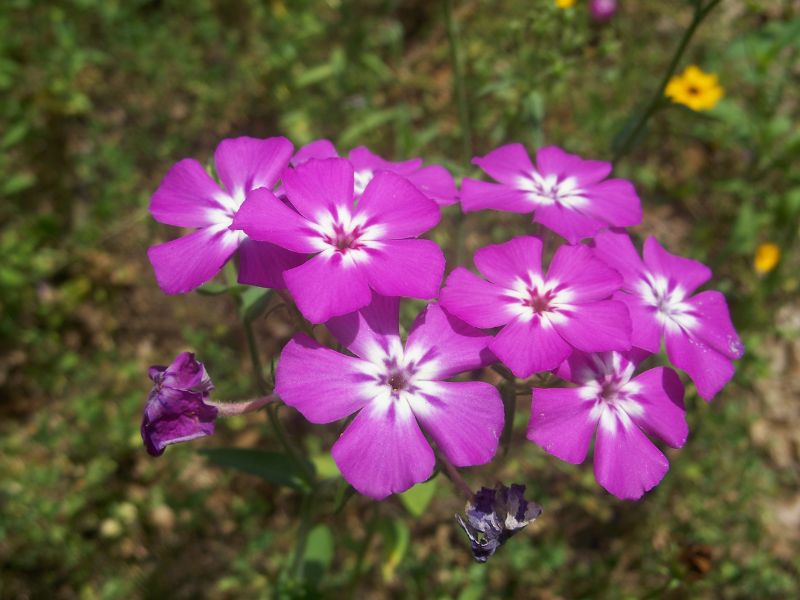
It is an annual, growing from seed each year. The branches have sharp, pointed, lengthy, ciliated leaves with rounded flowers. The flowers are single or double, with lightly scented, flat, star-shaped petals. The flowers mature to 2.5 cm (1 in) in diameter. It tolerates cold weather well, but requires plentiful watering and dislikes drought, wind and heat. The plant attracts hummingbirds and butterflies.
II. How to Grow and Care
Sunlight
Annual phlox blooms best in full sun. For varieties whose bloom extends into the summer, partial shade in the afternoon is beneficial.
Temperature and Humidity
Annual phlox blooms in the spring and fall when temperatures are cooler but there are new cultivars that have been bred with more resistance to heat; they bloom almost non-stop from spring through fall. The plant is not winter-hardy.
Soil and Water
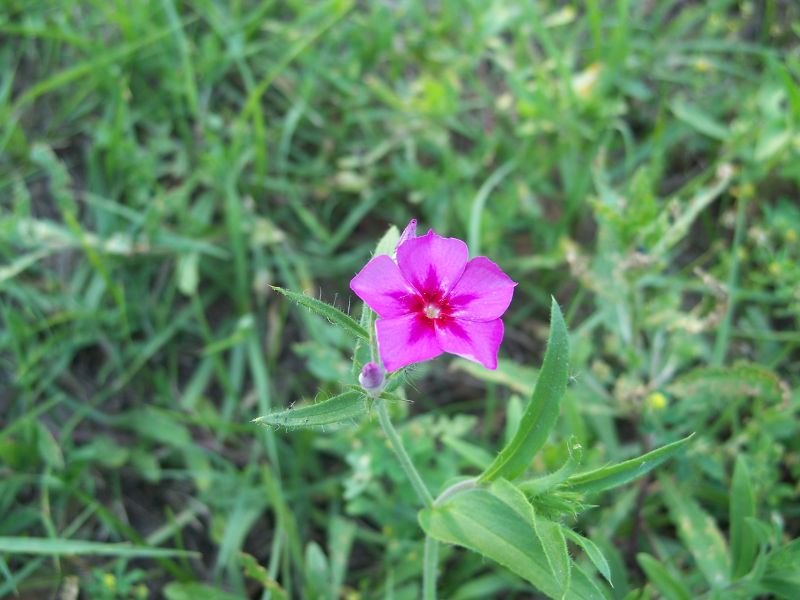
Annual phlox is not too finicky about soil but it needs to be well-drained, with a soil pH between 6.8 and 7.2.
While some varieties are moderately drought-tolerant, keeping the soil evenly moist ensures continuous bloom. Water when the top inch of soil is dry. Applying a 2-inch layer of mulch around the base of the plants helps conserve soil moisture.
Fertilizing
In addition to amending the soil with lots of organic matter, fertilize the plants with an all-purpose slow-release fertilizer in the early summer to encourage extended flowering. For the amount to use, follow product label directions.
Planting Instructions
Annual phlox can be started from seed or grown from transplants purchased at a nursery in early spring after the last frost. Dig a hole about twice the diameter of the pots and about the same depth. Water the plants well in their pots and let them drain before placing them in the hole and backfilling with the original soil. Gently tamp down the soil and water well.
Space the plants 8 to 12 inches apart.
Pruning
Annual phlox typically doesn’t require pruning. However, removing spent flowers can encourage the plant to produce more blooms. This is also recommended if you do not want the plant to self-seed itself.
Propagation
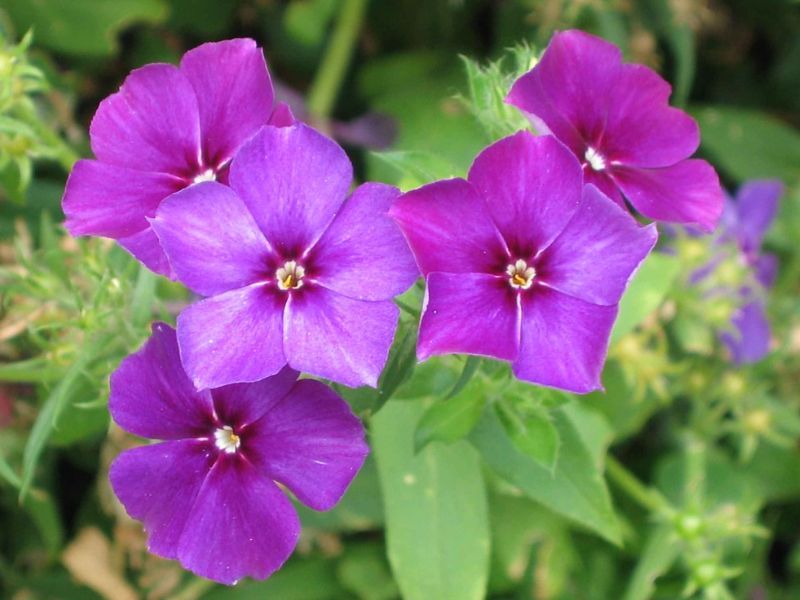
Annual phlox can reseed, so it may not be necessary to replant it each year. Otherwise, you can sow annual phlox outdoors, which is the preferred method because the plants don’t transplant well. After the last spring frost when daytime temperatures reach at least 62 degrees F—or, if you live in a warm climate, in the fall—sow the seeds in a weed-free area. Cover the seeds with 1/8 inch of fine soil and keep the soil evenly moist. As the seedlings grow, thin them 8 to 12 inches apart. You can also start the seeds indoors 4 to 6 weeks before the last frost date and transplant them outdoors after the last spring frost.
Potting and Repotting
Select a pot with large drainage holes and fill it with a well-draining potting mix. Keep in mind that potted plants need more frequent watering and fertilization than plants in the landscape. Water them at least daily in hot summer weather.
The lifecycle of annual phlox ends in the fall so it won’t require repotting.
Pests and Diseases
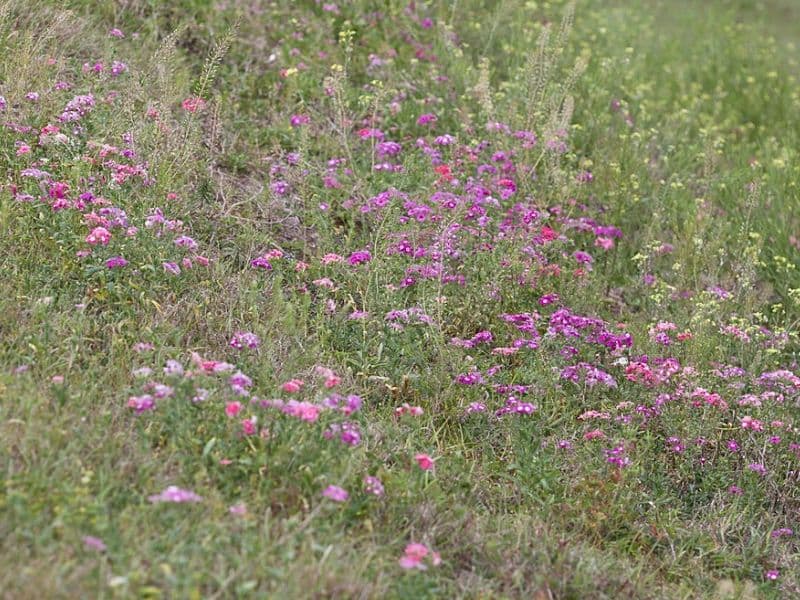
Annual phlox is most affected by powdery mildew, leaf spot, and root rot, especially in a hot, humid climate. The plants can attract spider mites and the phlox plant bug. It has moderate resistance to deer browsing.
III. Uses and Benefits
You can pair annual phlox with other springtime bloomers such as tulips and daffodils. Low-growing phlox forms a tidy mound of color at the feet of lofty spring bulbs, but you can count on phlox to continue blooming long after the flowering bulbs drop their petals. You can also plant it as a companion for spring-flowering shrubs: It quickly covers the soil around the shrubs with a splash of color, complementing the blooms overhead. Dwarf fothergilla, azalea, rhododendron, flowering quince, deutzia, and forsythia are some excellent spring shrub companions. Annual phlox is a perfect addition to butterfly and hummingbird gardens.
For the best effect, group at least three to five plants together or plant drifts of low-growing
annual phlox along the fronts of borders. Annual phlox also makes a good plant for containers and window boxes.
IV. Types of Annual Phlox
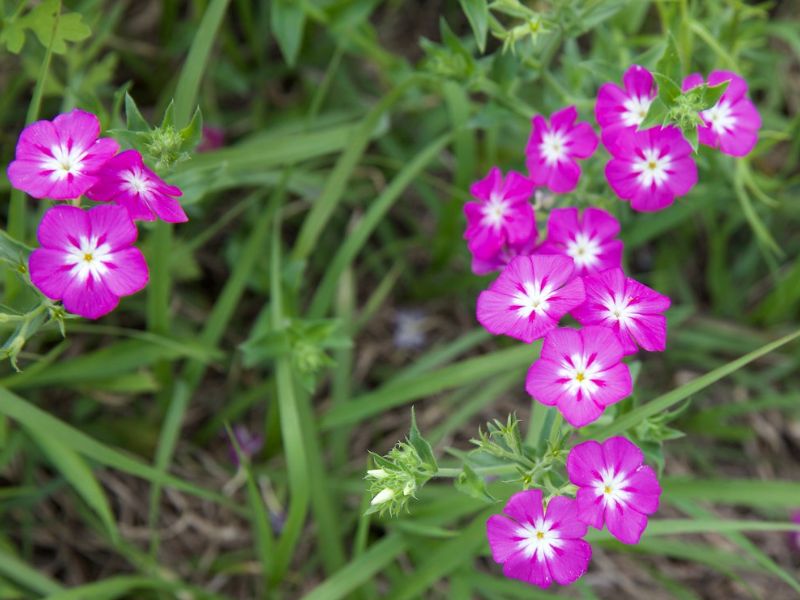
‘Gisele’ Series
This series withstands heat and has excellent drought tolerance. The plants of this series grow 12 inches tall and 18 inches wide.
‘Gisele White’ has clusters of pure white flowers in spring, summer, and fall.
‘Gisele Pink’ is a light pink flowering variety with a dark pink flower center.
‘Gisele Hot Pink’ has almost neon-pink blooms.
‘Gisele Light Violet’ is heat-resistant and blooms all summer.
‘Popstars’ Series
This series was also bred for its heat tolerance. The plants, which grow 12 inches tall and 16 inches wide, sport finely cut, star-shaped flowers.
- ‘Popstars Red’ has bright red blooms with crisp, pointed petals.
- ‘Popstars Blue’ has a mounding habit and purple flowers.
- ‘Popstars Bright Rose with Eye’ has pink flowers with a bright white center.
- ‘Popstars Purple with Eye’ has purple flowers with a bright white center.
Find Where to Buy the Best Annual Phlox (Phlox drummondii)

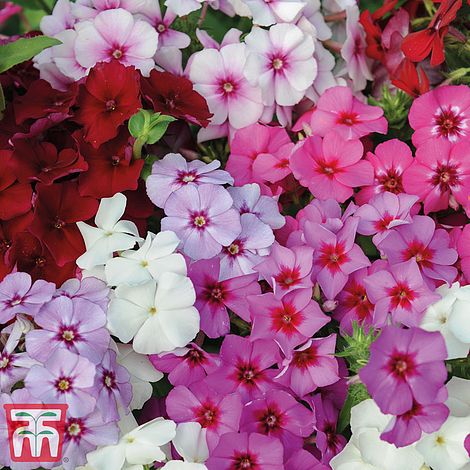
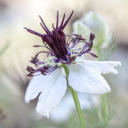


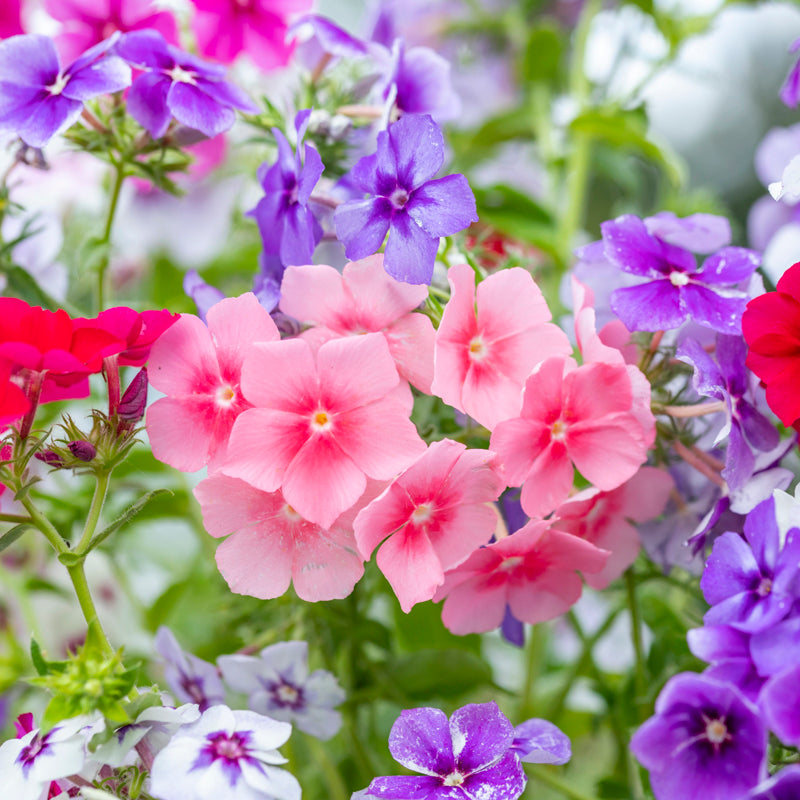

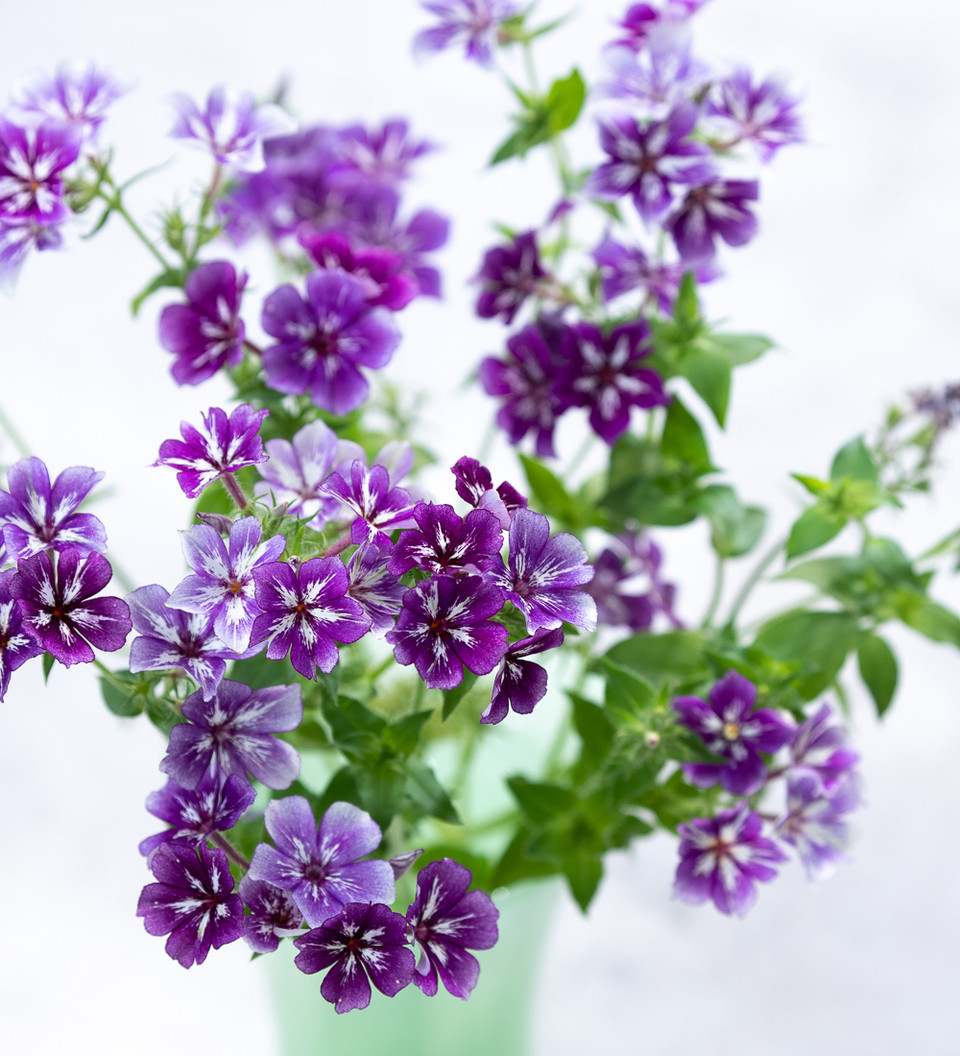










Leave a Reply